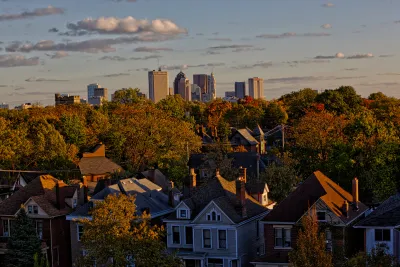Columbus has approved six zoning code amendments, which include height limit increases from three stories to 16 and eliminate parking requirements for large developments in 12,300 parcels along major transportation corridors.

The Columbus Dispatch reports that the “Columbus City Council voted Monday to overhaul the city's zoning code, paving the way for new higher-density development in parts of the city.” The unanimous vote on all six resolutions amending the city’s zoning code comes after years of planning and months of public meetings and concerns about how increased density would affect the city. “At the Monday meeting, council members said the change will help modernize the code into a more lenient process, eliminate delays, keep up with Columbus' growing population, and ease the housing shortage in the future,” as well as fix “a broken system plagued by a history of redlining, or discriminatory financial practices historically used against marginalized communities such as racial or ethnic minorities,” writes reporter Cole Behrens.”
As part of the zoning changes, Columbus has targeted 12,300 parcels along major bus corridors throughout the city and allows for case-by-case height and parking variances to help increase the number and affordability of new housing units. Building heights in these zones, previously restricted to 35 feet, can now go as high as 16 stories along some major streets; in most instances, to get the maximum height allowed, developers will have to meet an “affordability requirement” that “grants them two to four extra stories, based on the category, if developers provide the required amount of affordable housing.” The code also eliminates parking requirements for large developments, which previously were required to provide hundreds of off-street parking spaces, often in the form of expensive underground garages.
FULL STORY: Columbus approves sweeping zoning changes, increasing height limits in parts of city

National Parks Layoffs Will Cause Communities to Lose Billions
Thousands of essential park workers were laid off this week, just before the busy spring break season.

Retro-silient?: America’s First “Eco-burb,” The Woodlands Turns 50
A master-planned community north of Houston offers lessons on green infrastructure and resilient design, but falls short of its founder’s lofty affordability and walkability goals.

Delivering for America Plan Will Downgrade Mail Service in at Least 49.5 Percent of Zip Codes
Republican and Democrat lawmakers criticize the plan for its disproportionate negative impact on rural communities.

Test News Post 1
This is a summary

Test News Headline 46
Test for the image on the front page.

Balancing Bombs and Butterflies: How the National Guard Protects a Rare Species
The National Guard at Fort Indiantown Gap uses GIS technology and land management strategies to balance military training with conservation efforts, ensuring the survival of the rare eastern regal fritillary butterfly.
Urban Design for Planners 1: Software Tools
This six-course series explores essential urban design concepts using open source software and equips planners with the tools they need to participate fully in the urban design process.
Planning for Universal Design
Learn the tools for implementing Universal Design in planning regulations.
EMC Planning Group, Inc.
Planetizen
Planetizen
Mpact (formerly Rail~Volution)
Great Falls Development Authority, Inc.
HUDs Office of Policy Development and Research
NYU Wagner Graduate School of Public Service





























